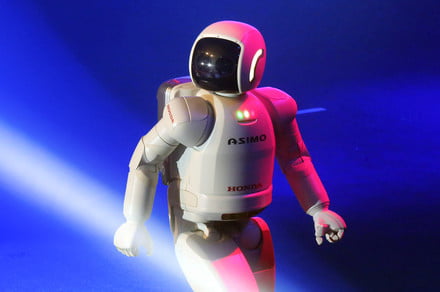[youtube https://www.youtube.com/watch?v=-2PV27j881M?start=1]
For some reason, we humans seem to be hell-bent on making robots that look like us. One thing is for sure, though: We’ve been making humanoid robots for a long time, and they’re starting to get really good. This is Robots Everywhere — a show where we chronicle the slow but steady takeover by our future robot overlords, and show you how they’re making their way into practically every facet of modern life
Robots come in all shapes and sizes, but one of the constants throughout our history of robotics is the goal of making a humanoid robot that looks, sounds, and acts just like us humans do. Maybe the reason we seek to create robots in our own likeness is narcissism. Or maybe it’s for practical reasons. Or perhaps it’s just because human beings like a challenge. In any case, building machines that look and act like humans has always been part of our vision of what robots could and should be.
Humanlike robots date back as far as robotics itself. Some of the very first prototype robots were designed to have humanoid form and function. Eric the Robot made his debut in 1928 at London’s Exhibition of the Society of Model Engineers. This “Man of Tin” was designed to make the opening address when the Duke of York wasn’t able to attend. Erik took to the stage, rose to his feet, bowed to the audience, and gave a 4-minute opening address. Technically, the address was given via radio by someone backstage, but the technology was still pretty impressive. In 1939, Westinghouse debuted Elektro, a 7-foot-tall giant of a humanoid robot that could speak up to 700 words using a record player inside its chest, and who could also blow up a balloon and smoke cigarettes.
Cigarette smoking aside, these robots were still very primitive, and would remain that way for another half century or so. Around the year 2000, humanoid robots started making a comeback in a major way, most notably through Honda’s Asimo robot, which finally had the ability to walk on its own two legs. Asimo was the culmination of decades’ of work to enable machines to walk, run, and balance just like a human. Asimo could also recognize moving objects, gestures, sounds, and even faces, which allowed him to interact with humans.
Asimo was a turning point in humanoid robotics, and soon the speed and complexity of these machines exploded. These robots could now move their hands in highly dexterous ways, make facial expressions, and play soccer. In recent years, we’ve seen humanoid robots complete with skin and human features, as well as robots from companies like Boston Dynamics that, in just a few short years, went from barely walking to being able to navigate uneven, icy terrain, then gain the abilirty to run, parkour, and do backflips with ease.
The pace of progress in humanoid roboticss continues to speed up. We’re now at a point where the prospect of being able to live and work alongside these robots isn’t just possible — it’s likely to happen in the near future.

